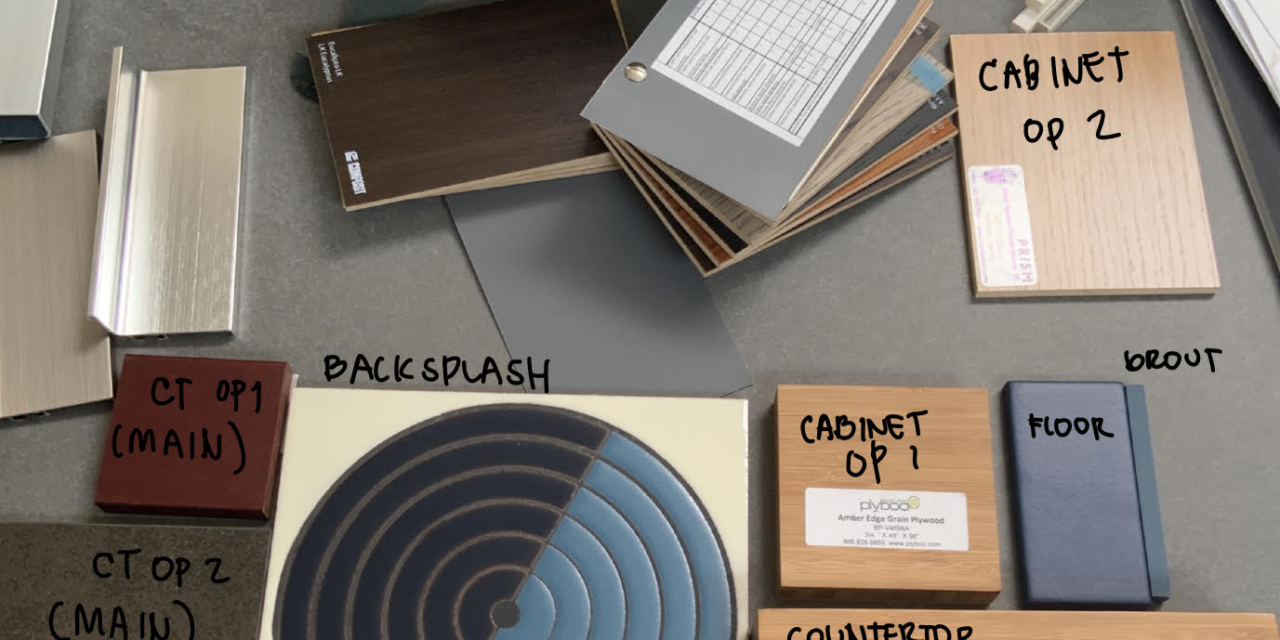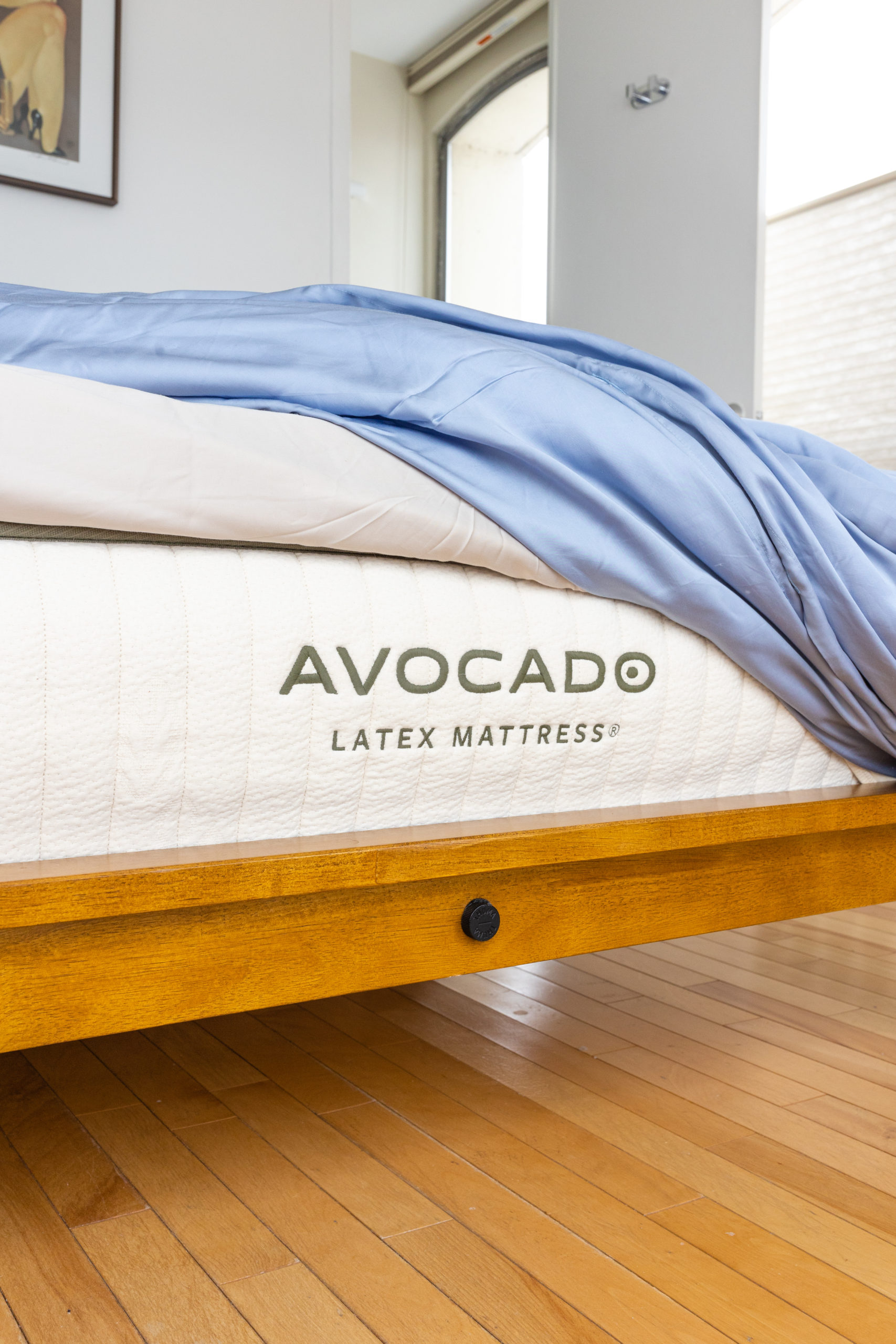Photos by Jill Tiongco Photography
By Phillip Hingston
Decisions, decisions, decisions! Whether it’s a renovation or new home construction, choosing the right materials is every bit as important as design. And an overall sustainable approach will help ensure your home’s longevity, health, and appeal. The key to selecting sustainable materials is to look forward and back at the entire lifecycle of a product. From how resources are extracted through production processes, to how it’s used in your home and then recycled or disposed of. Along the way, you will make tradeoffs based on what is most important to you. Let’s look at how this eco-friendly, lifecycle view can inform purchasing decisions. You’ll also see how some of our favorite products made it into Elemental Green’s first branded sustainable renovation, #EcoRenovate.
A circular economy employs ethical, sustainable practices that nourish systems within a product’s lifecycle and produce no waste. In nature, there is no such thing as “waste.” There is always something to be reused or integrated into another living thing. This contrasts starkly with humankind’s traditional approach, a linear economy. The linear economy consumes raw materials and energy from non-renewable resources to produce goods, which are discarded at the end of life. And it produces waste; lots of waste. This is tremendously damaging to the environment. From chemicals leaching into groundwater, to floating garbage patches, to methane released from landfill, the downsides are endless (often literally).
The Lifecycle Guide to Selecting Sustainable Materials
More brands than ever are marketing sustainably sourced goods using “closed-loop” production processes. They are using and recycling their own waste materials and resources to produce products; sometimes using recycled goods to create entirely new product lines, otherwise known as up-cycling. This conservation-based approach can lead to lower prices to the end-user, less energy consumption and greenhouse gas emissions, and closer relationships between supply chain managers and the workers who produce eco-friendly materials.
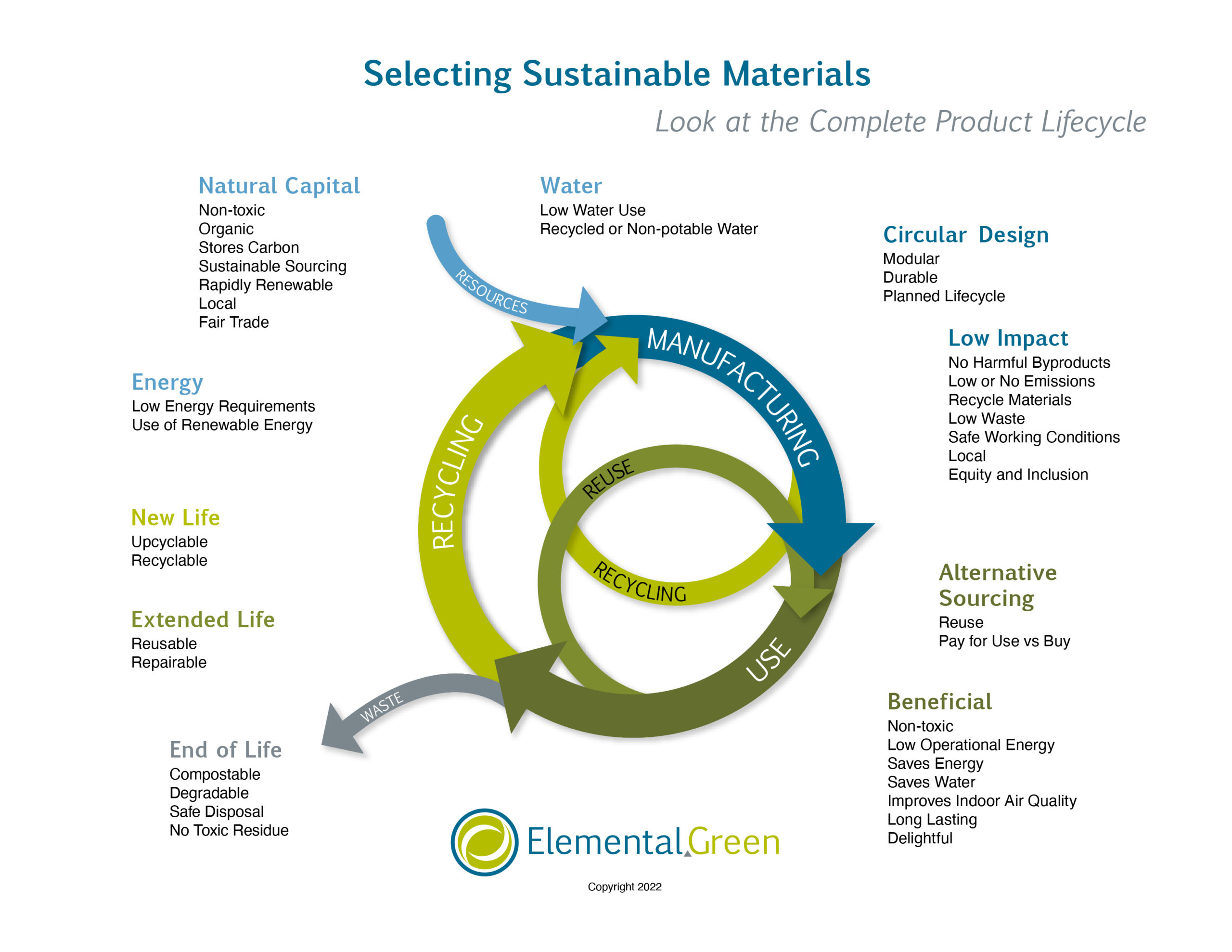
Extracting Resources
Start with the question: Do we need to purchase new materials? Interior design has long employed antiques to bring unique beauty to contemporary homes. (Not necessarily with the intention of being sustainable.) But only recently have new construction and home renovations begun exploiting “used” products and materials. Materials like flooring can be reused or repurposed from existing structures. Furnishings can be rented then returned, or enjoyed then passed along. Thus transforming a system from linear to circular. Seeking existing materials for reuse is one of the most eco-friendly things you can do in your home.
When you do buy something new, look back at where the natural resources for a product came from. If the product came from sustainable origins, it is likely to be healthier and more sustainable in your home, and easier to recycle or dispose of. Did the manufacturer choose sustainable practices like regenerative forestry, Fair Trade, water reuse, and renewable energy?
Manufacturers that make the most of water resources often employ water reclamation. Conserving clean water resources is kinder to the environment, plus it enhances water security and resilience. Water that has been used or contaminated in manufacturing processes can sometimes be captured to be reused or repurposed. Fireclay’s water reclamation system stores contaminated wastewater from the automatic glazing machine. But after just a day or so, the solids settle to the bottom of the tank, and the water can be reused to clean the machine. Even the tank sediment is used, along with other reclaimed waste, to form new clay tiles. Perhaps some was used in Elemental Green’s #EcoRenovate project, where Fireclay is a dazzling design element.
Closing loops in materials production and construction means managing all kinds of waste. Manufacturers like Consentino and Fireclay capture scrap materials and incorporate them into new products. When a product uses fewer resources, your home ultimately has less embodied carbon. Embodied carbon is the total carbon dioxide emissions associated with creating your home and everything inside it. It includes CO2 emissions from manufacturing the materials and the construction of your home. The energy consumed transporting raw materials to production lines and then finished material to the project site constitutes a portion of that embodied carbon. Operational carbon is how much CO2 emissions are generated by running your home—think natural gas for your furnace or electricity for your lights. More on that later.
Some manufacturers seek third-party carbon offsets to counter the greenhouse gasses released during manufacturing or transportation. These are projects that reduce or remove greenhouse gas emissions from the atmosphere, usually verified by an agency or NGO. Dekton countertops, produced by Consentino, have undergone a full lifecycle environmental analysis for carbon neutrality. In addition to efficiencies in energy and consumption of natural resources at the factory, Dekton supports a biogas project in Chile.
Health and Equity
The health and wellness impacts of the products we use and live with have never been more important. And we have made great strides to keep toxic manufacturing waste from polluting our air and waterways. Generally speaking, if a product or material uses no toxic chemicals, it is likely healthier for our home environment. But if we surround ourselves with products made with formaldehyde, perfluorocarbons, and VOCs, we may be degrading our home’s indoor air quality (IAQ); and perhaps harming the workers and the environment at the factory.
B Corporations and Fair Trade practices ensure a living wage for workers and maintain safe and healthy working conditions. While Fair Trade certification is unusual in finished building products, Certified B Corporations like Avocado sometimes use Fair Trade materials. More and more, ethical guidelines like Fair Trade are becoming part of sustainable and well-building construction. Fair Trade holds a mirror to the circular economy model, encouraging healthy, sustainable practices for people and their localities.
Finding products that are free of harmful substances can be a challenge, so look for certifications that protect your health and wellness. OKEO-TEX, for example, ensures buyers that textiles are free of harmful chemicals. Perhaps our favorite #EcoRenovate product that uses this certification is the Avocado Green mattress, which contains zero petroleum-based polyurethane foams, chemical adhesives, or flame retardants.
Creating a better planet for all remains the heart of the environmental justice movement. Among other B Corps, Avocado is Climate Neutral Certified by investing in carbon offsets and is moving towards validated zero waste.
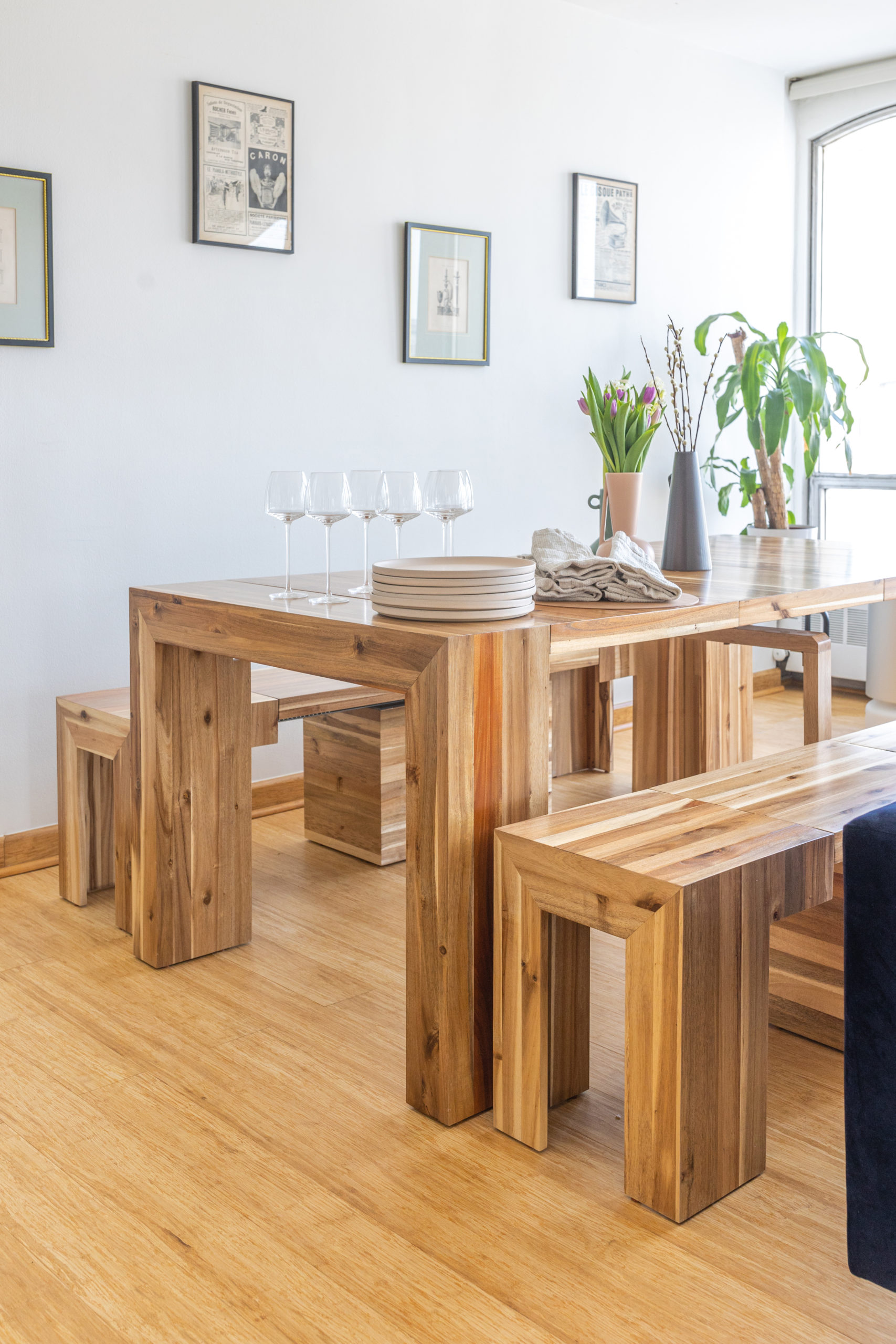
Beneficial Use
Whether they’re structure, infrastructure, or comfort and decor, we are selecting sustainable materials for how they will be used in our homes. It’s important to identify the key factors that impact how long you will utilize and enjoy a product. Here is where cost-effective and eco-friendly come into harmony. A product that is expensive to run is likely consuming energy and/or excessive resources and materials throughout its usable life. Interestingly, people are inclined to hold on to—or pass along for reuse—a product or building that functions flexibly, is durable, or brings delight. If you are less than satisfied, it’s likely headed for the curb no matter how much it cost.
Considering the amount of time you will need a particular product can help determine whether it might be better to pay for use as opposed to owning it outright. Paying for use can take the burden of maintenance away, while giving you the flexibility to change things up. Renting furniture versus outright purchases keeps quality, usable pieces out of landfills and in homes. And if you love the piece, there are options like rent-to-buy.
Quality Counts
For lasting useability, we’re selecting sustainable materials for their quality, innovative design, and durable construction. Often these attributes will cost more up front than less-expensive commodity goods (that’s why they call them cheap). But higher quality products and materials usually withstand the test of time. Materials that last are far more sustainable, avoiding the landfill or recycling plant for longer. And durable furnishings that you love can follow you on your next move, or be sold or passed along for someone else to use and enjoy. The Transformer Table, for instance, offers six-in-one flexibility, extending for large gatherings or breaking down into small sitting pieces. Flexible design and beautiful hardwood construction mean you’re more likely to use it, love it, and take care of it.
When looking at a product’s carbon footprint, two types of emission occur. The first is embodied carbon, described above. The second occurs during use, known as operational emissions. Renewable energy can dramatically lessen your home’s overall carbon footprint, of course. But also consider using LED light sources instead of traditional incandescent bulbs. LED light bulbs use a small fraction of the energy of incandescents, and they can last more than a decade. Many new LED light sources do not use replaceable bulbs at all. Instead they feature outside-the-box designs like the beautiful lightbar we chose for the #EcoRenovate bathroom.
Some of the links in this article are affiliate links, meaning at no additional cost to you, we will earn a commission if you click through and make a purchase. Thank you for helping us continue to bring you great content.
Our water and air
Systems and products that reduce water usage, yet still look and feel stylish, are widely available. Low-flow showerheads, such as the Nebia Spa Shower we used on #EcoRenovate, have improved to where the average family could save thousands of gallons of fresh water a year. These lower your water bill and reduce energy use, while still providing a quality shower experience. Look for the WaterSense label to ensure that you “shower with power.” Smart water systems prevent water waste due to leaks, a huge source of wasted water; and can protect your home from water damage.
In renovations, we cannot always replace air-handling systems. So the quality of the air you’re breathing indoors is often only as good as the air quality outdoors. If you live in an urban area or near heavy traffic, air pollution can irritate your airways or even cause illness, and long-term damage. Avoid finishes and furnishings that outgas toxins directly into your home, and use an air purifier where you’re uncertain about your IAQ. We chose the Molekule Air purifier that includes a prefilter. It uses oxidation to break down unhealthy pollutants, not just trap them.
When looking at a product’s carbon footprint, two types of emission occur. The first is embodied carbon, described above. The second occurs during use, known as operational emissions. Renewable energy can dramatically lessen your home’s overall carbon footprint, of course. But also consider using LED light sources instead of traditional incandescent bulbs. LED light bulbs use a small fraction of the energy of incandescents, and they can last more than a decade. Many new LED light sources do not use replaceable bulbs at all. Instead they feature outside-the-box designs like the beautiful lightbar we chose for the #EcoRenovate bathroom.
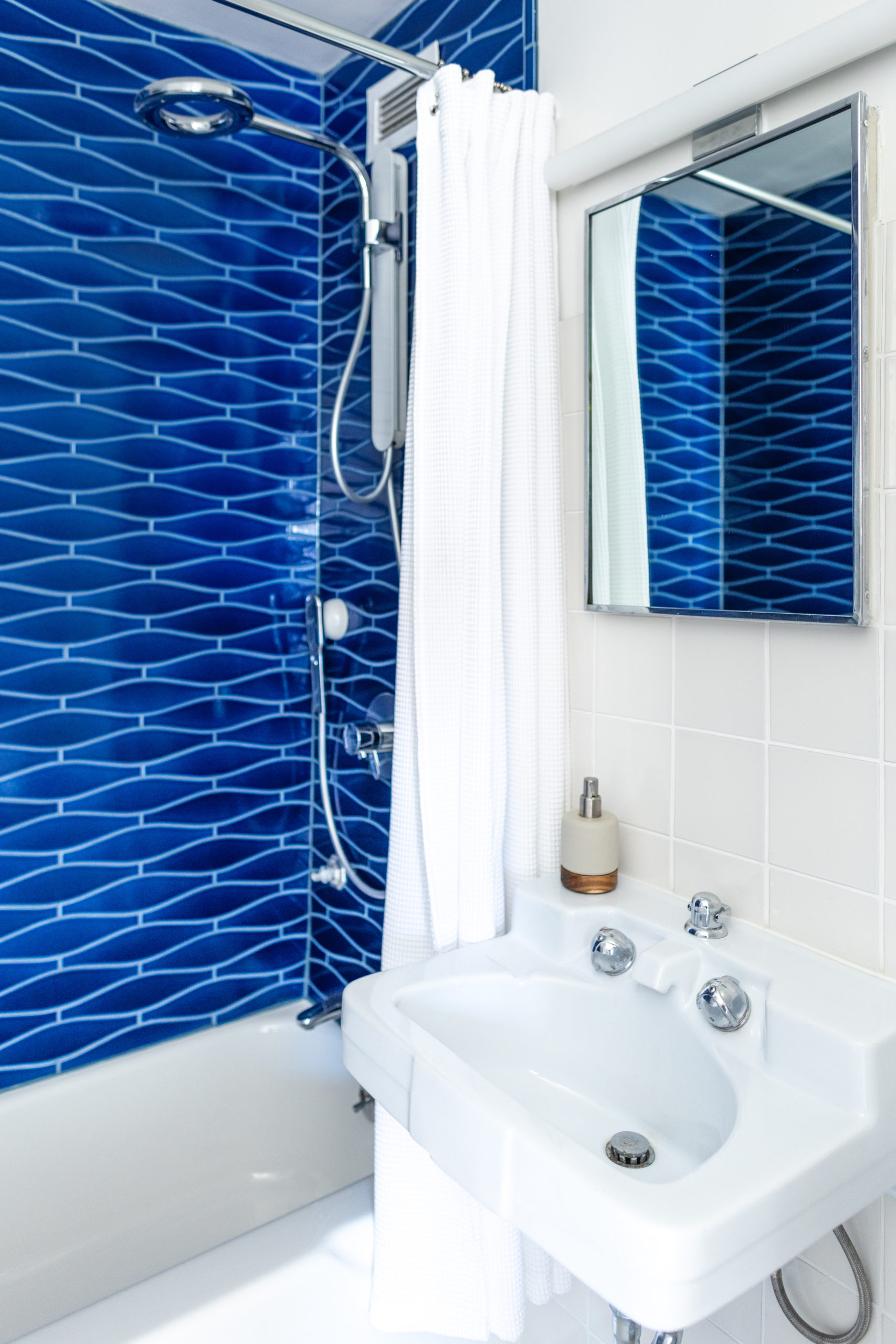
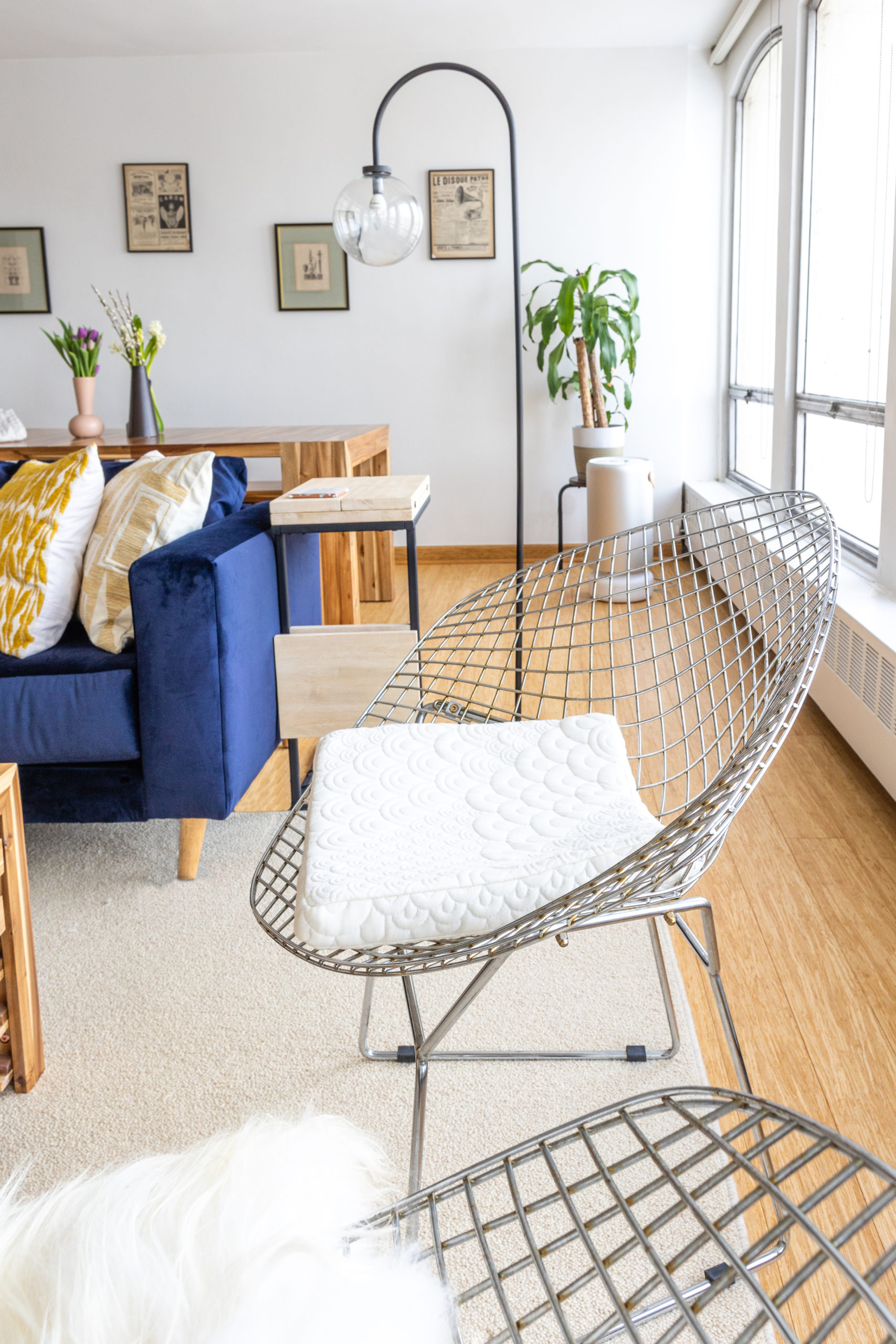
End of Life or New Life?
Selecting sustainable materials for their potential second life can be highly cost-effective if you can resell them. Or these can be highly ethical purchases when they contribute to charitable ventures in your own community. Habitat Home Stores take donations of gently used furniture, appliances, building materials, and fixtures; whether it’s a single piece or a lot.
These stores are also a great place to ask that fundamental question: Do we need to purchase new materials? You’ll find a variety of styles and décor options, maybe even a true vintage treasure. For #EcoRenovate, we opted to purchase two classic Bertoia-style chairs from the online resale shop Chairish for the living room. They fit right in with the modernist vibe.
Repairing what you already own and love is often going to be the most sustainable option, versus disposal or even recycling. Right to Repair is a movement fighting limitations on repair, including planned obsolescence and access to replacement parts. Repairability can avoid you having to replace the item for a time, saving money in the long run.
Companies like Sabai have embraced this closed-loop movement, designing furniture with the capability to easily replace specific parts, and providing matching replacement components. Sabai begins with high-end design and sustainable materials, and then extends their products’ usability via repair. Revive is Sabai’s buyback program that takes trade-ins and offers second-life items for sale. We chose a Sabai sectional in sapphire-blue recycled velvet as the statement piece for the #EcoRenovate living room.
Recycling and safe disposal
Recycling can save products and materials from being discarded at end of life, or salvage products that have never been used at all. When selecting sustainable materials, look ahead to consider how you will close that loop. Can it be turned into new, usable material? Will recycling eliminate risks of water and air pollution and ease the burden on municipalities and landfills?
Household paint is an excellent example. Because it may contain dangerous contaminants, leftover architectural paint was previously managed as household hazardous waste (HHW), at great expense to municipalities. In fact, leftover, unused paint once constituted a fair percentage of HHW collection and disposal. Recycling paint is a multistep process, but companies like Recolor offer premium-quality recycled paint in today’s most au courant colors. Elemental Green employed Recolor’s paints throughout the #EcoRenovate project. According to Recolor, each gallon of recycled paint we used saved an average of 12 gallons of water and 13.6 pounds of CO2 emissions.
Before you bring any product or construction material into your home, large or small, consider whether it will be recycled or end up in a landfill. Personal electronics and smart home devices, especially, contain elements that can either be returned to the production stream as valuable raw materials, or properly disassembled and disposed of as hazardous waste. Stores like Best Buy and Apple will take older technology off your hands for no charge, so it can be recycled into supply chains. Community e-waste drop-off events are another great way to dispose of batteries, home office equipment, and other unusable electronics.
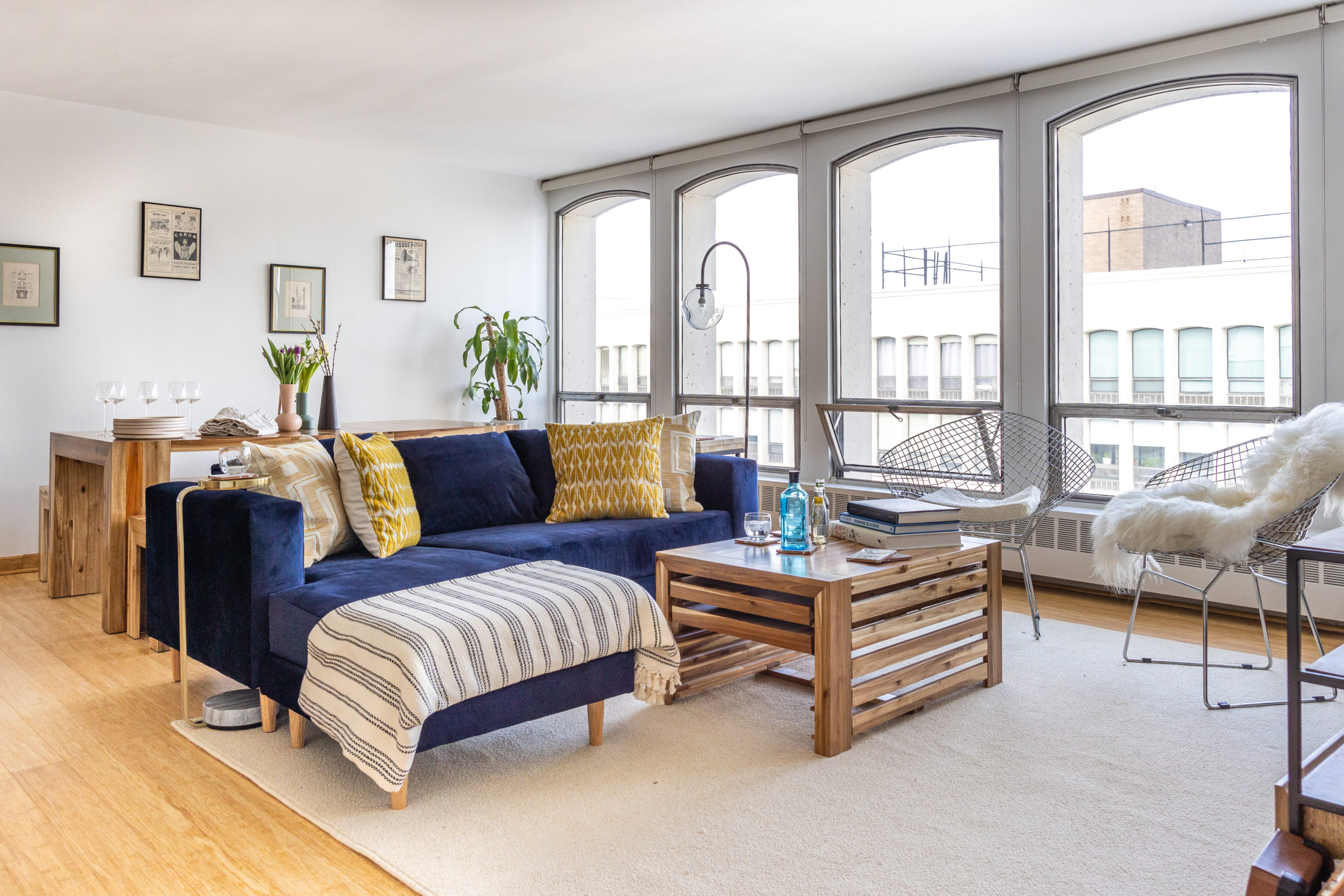
Return to the earth
Finally, look for natural materials when you’re selecting sustainable materials for your home; products that are not treated with chemicals like toxic finishes, dyes, or fire retardants. Compostable or biodegradable products will break down naturally and return much of the resources they embody to the environment. #EcoRenovate shows off a delicious wool area rug from Earth Weave. This 100 percent natural fiber carpet uses only natural adhesives and hemp, cotton, and jute as backing materials. Durable and naturally stain-resistant wool brings nothing toxic into your home. And when its usable life is over, the carpet can complete the circle. Returning to the earth and recycling the elements and energy it contains, nourishing lives yet to come.
About the author:
Phillip Hingston is earning a bachelor’s in Political Science and Sustainability from Chatham University. He currently works as a student intern at Elemental Green, focusing on content creation and digital marketing.


